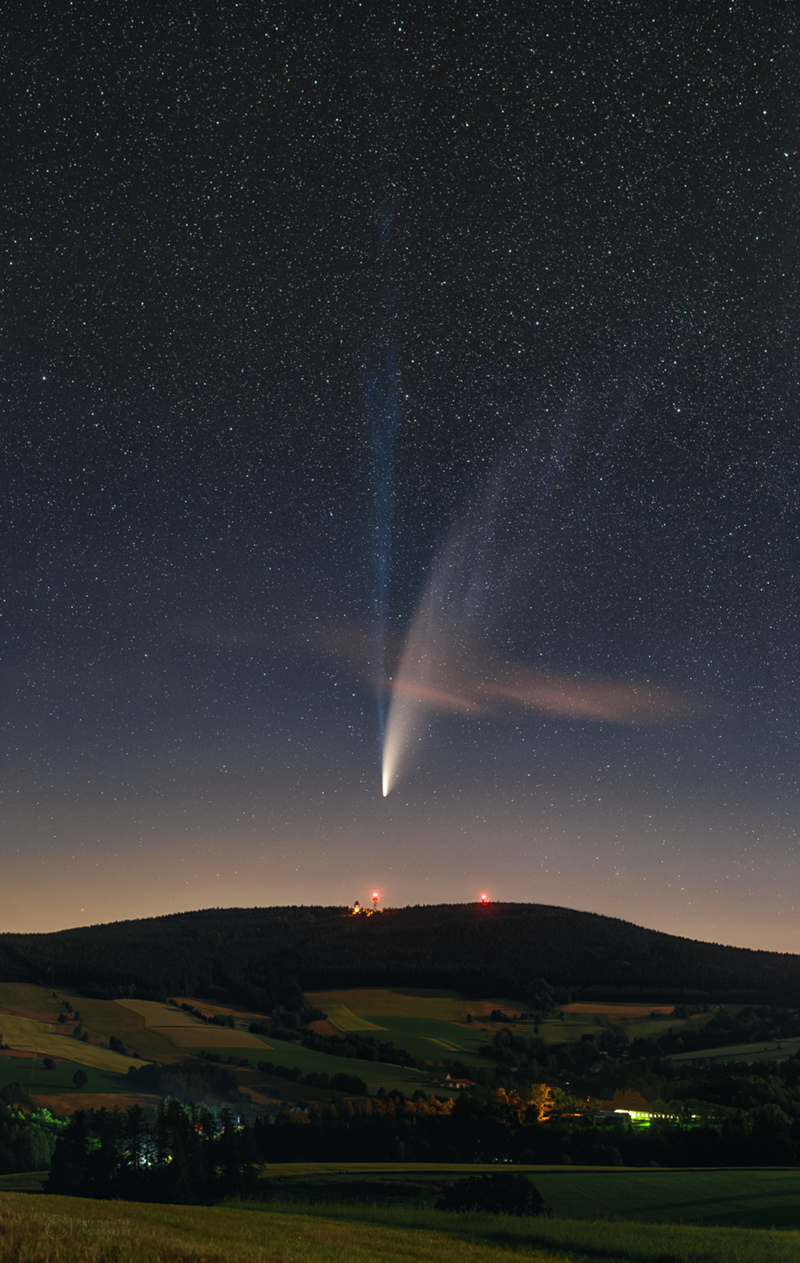NEOWISE彗星的颀长彗尾
2020年7月16日
The Long Tails of Comet NEOWISE
Image Credit & Copyright: Petr Horalek
Explanation: This Comet NEOWISE (C/2020 F3) now sweeps through our fair planet’s northern skies. Its long tails stretch across this deep skyview from Suchy Vrch, Czech Republic. Recorded on the night of July 13/14, the composite of untracked foreground and tracked and filtered sky exposures teases out details in the comet’s tail not visible to the unaided eye. Faint structures extend to the top of the frame, over 20 degrees from the comet’s bright coma. Pushed out by the pressure of sunlight itself, the broad curve of the comet’s yellowish dust tail is easy to see by eye. But the fainter, more bluish tail is separate from the reflective comet dust. The fainter tail is an ion tail, formed as ions from the cometary coma are dragged outward by magnetic fields in the solar wind and fluoresce in the sunlight. Outbound NEOWISE is climbing higher in northern evening skies, coming closest to Earth on July 23rd.
Notable Images of Comet NEOWISE Submitted to APOD: || July 15 || July 14 || July 13 || July 12 || July 11 || July 10 & earlier ||
Tomorrow’s picture: tales in space
NEOWISE彗星的颀长彗尾
影像提供与版权: Petr Horalek
说明: NEOWISE彗星目前在地球的北天飞掠。在这幅7月13/14晚摄于捷克Suchy Vrch峰的深空影像里,它颀长的彗尾贯过视野。这幅以星空为导星标的并透过滤镜拍摄的组合影像,捕捉到人类肉眼看不到的彗尾细微结构。暗淡的彗尾从这颗彗星明亮的彗发伸出,向影像顶缘绵延了超过20度。其中,受到太阳的光压推送,因而形成的弯曲宽广尘尾肉眼轻易可辨。另一道较暗的泛蓝彗尾,则和彗星的反光尘尾完全分离。这道较暗的彗尾是离子尾,其成因是被太阳风磁场带出去的彗发离子,在阳光激发下荧荧生辉。踏上回程的NEOWISE彗星,在北天夜空不停攀升,将在7月23日运行到最靠近地球的位置。
提交给APOD的NEOWISE彗星的著名图像:|| 7月15日 || 7月14日 || 7月13日 || 7月12日 || 7月11日 || 7月10日或更早 ||
明日的图片: tales in space

